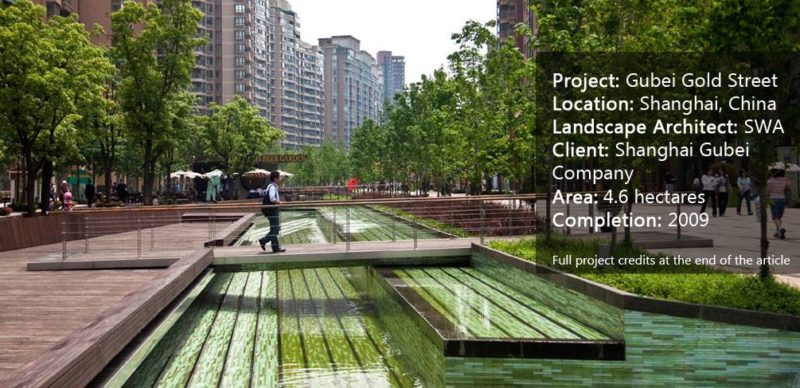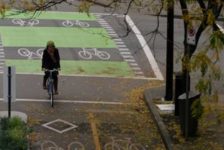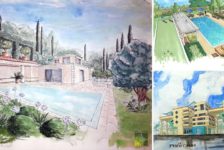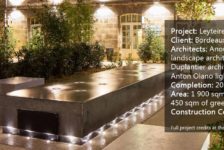Gubei Gold Street, by SWA, Shanghai, China. Shanghai is recognized as one of the most important Chinese cities, being considered as China’s gateway into the world. At the same time, it is often presented as the biggest urban construction site, with more than 640 skyscrapers. As the skyline of Shanghai reaches new heights, the need for pedestrian areas becomes imperative. Gubei Gold Street appears as a rare hidden gem; the pedestrian promenade is not something you can often come across in bustling Shanghai. In conceptualizing the project for the pedestrian mall, the talented landscape architects at SWA wanted to come up with a truly unique design. Shanghai becomes more and more crowded with each day that passes. For this reason, finding a place to develop a pedestrian promenade proved to be quite a challenge. The final choice was represented by a corridor flanked by 20-story, high-rise residential towers.
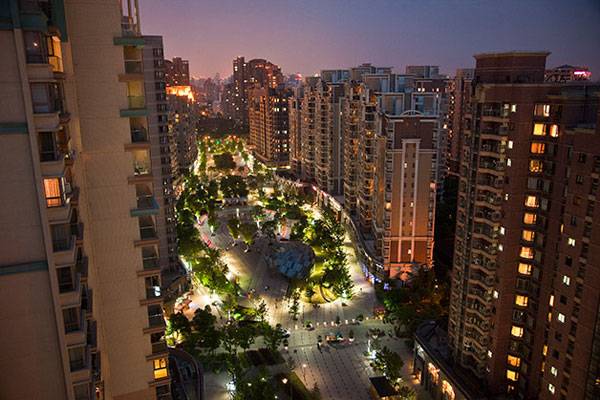
Gubei Gold Street. Photo credit: Tom Fox
Gubei Gold Street
In order to guarantee that it would not be perceived as a simple pedestrian area but rather as an iconic presence, it was necessary for a multitude of elements to be integrated within the project. The area chosen for the project needed enlivenment, and that was made possible by adding plazas, fountains, and cafes. Local residents and tourists visiting the area have access to dining and retail terraces. An amphitheater and a raised, tree-lined terrace complete the final image of the project.
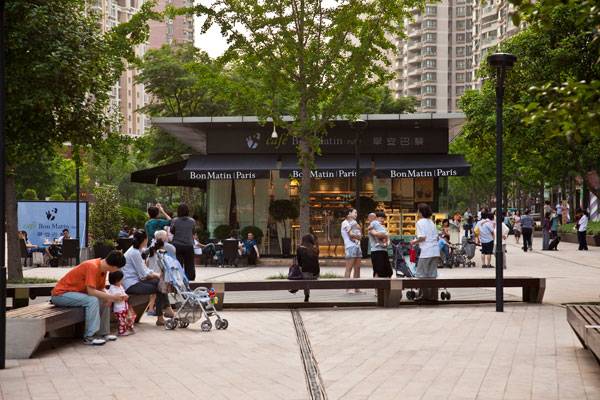
Gubei Gold Street. Photo credit: Tom Fox

Gubei Gold Street. Photo credit: Tom Fox
Pedestrian Mall: Oasis of Peace in the Center of a Bustling City
Shanghai is crowded, especially when it comes to the Gubei district. Thanks to the creative minds at SWA, the excellent location of the pedestrian mall provides an oasis of peace for the residents of this large, urban district. The newly designed open space can be easily perceived as a sanctuary from what can be otherwise described as a hectic city. This project can be offered as an example of what other similarly bustling cities should consider – pedestrian areas that offer peace and opportunities for relaxation.
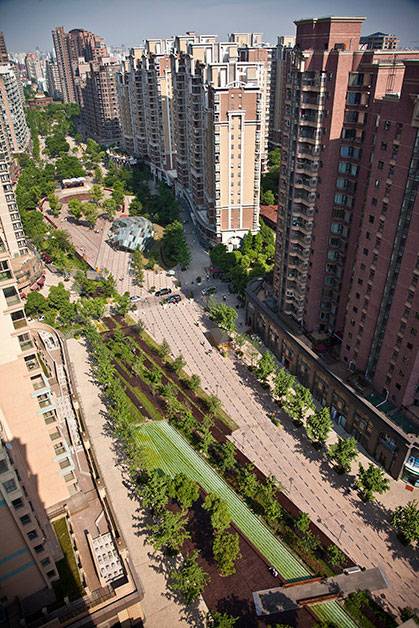
Gubei Gold Street. Photo credit: Tom Fox
- Is China Transforming its Relationship with Water? A Look at the Aiyi River Landscape Park
- Contemporary Landscape Architecture in China: Beautiful or Dangerous?
- Lotus Lake Park Sets Precedent for Sustainable Urban Design in China
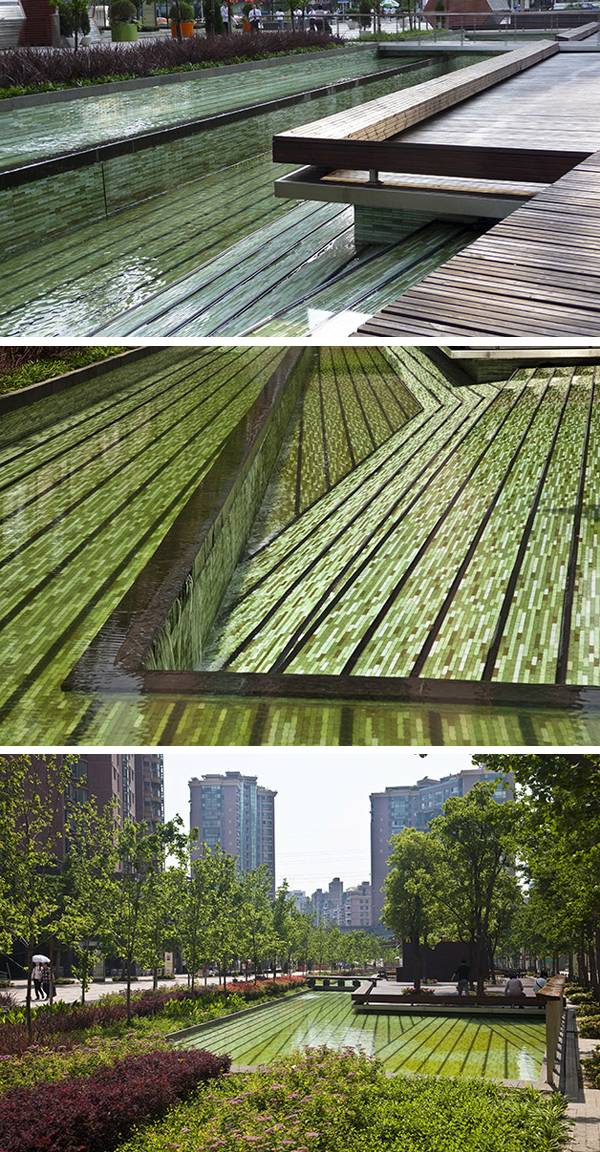
Top: Photo credit: Ying Yu Hung. Middle and bottom photo credit: Tom Fox
Modern and Classical Design Elements Pair with Excellent Vegetation Choices
For landscape architects, one of the biggest challenges is to choose the right elements of design for an open space. On one hand, these elements have to be functional, adding to the overall functionality of a space. On the other hand, one of the biggest jobs that landscape architects have to handle is the one of aesthetics. Those who visit the space need to find it both functional and pleasing from an aesthetic point of view.
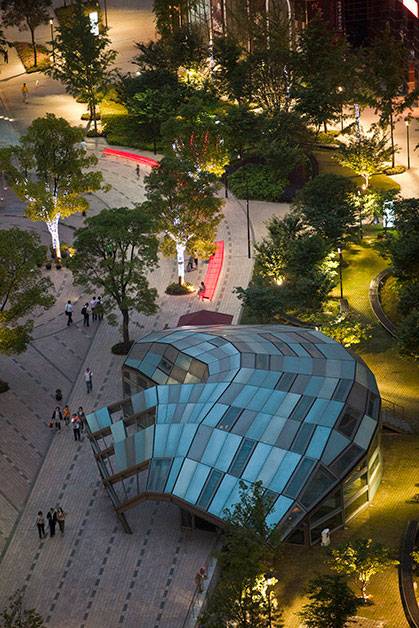
Gubei Gold Street. Photo credit: Tom Fox
Blending Functionality and Aesthetics
Gubei Gold Street is a classic example of how utility and aesthetics can be blended. The choice of modern elements in combination with classical French motifs has led to an amazing result. Each element has its purpose, demonstrating that random choices are never made when it comes to landscape design. For example, the retail promenade is lined with tall gingko trees. These deliver a powerful visual message, helping the visitor make the transition from the tunnel created by the high buildings to the more intimate gardens of the pedestrian space.
Planting on the Site
Evergreen camphor trees have been chosen in order to ensure a welcoming canopy all year round. Cherry trees attract visitors with their seasonal bloom and amazing colors. Looking at the overall choice of vegetation, it seems that every element has been chosen to appear in contrast with the hard-edged environment of the city.
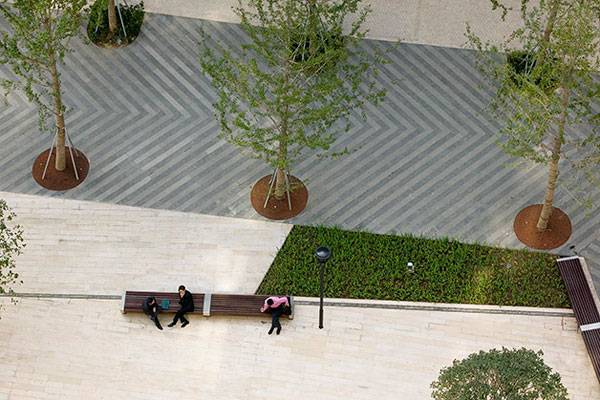
Gubei Gold Street. Photo credit: Tom Fox
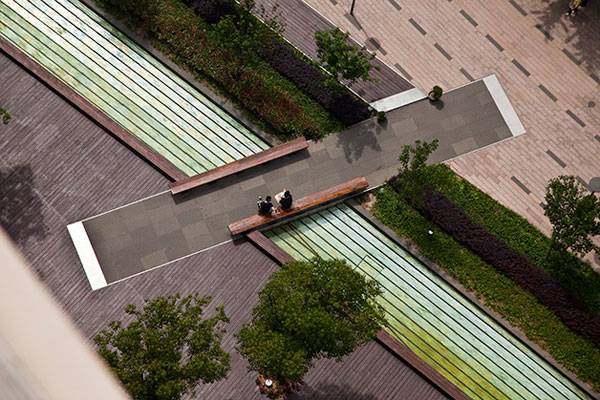
Gubei Gold Street. Photo credit: Tom Fox

Gubei Gold Street. Photo credit: Gerdo Aquino
Designing For The Senses
While many of the elements have been chosen to stimulate the visual sense, the choice of fragrant plants has been especially made with the purpose of stimulating the sense of smell. The landscape design of Gubei Gold Street provides a complete sensory experience, with fragrant plants such as olive trees enticing with their tiny yellow flowers. Walking through the area, you can smell rich scents, including rich peaches and apricots.
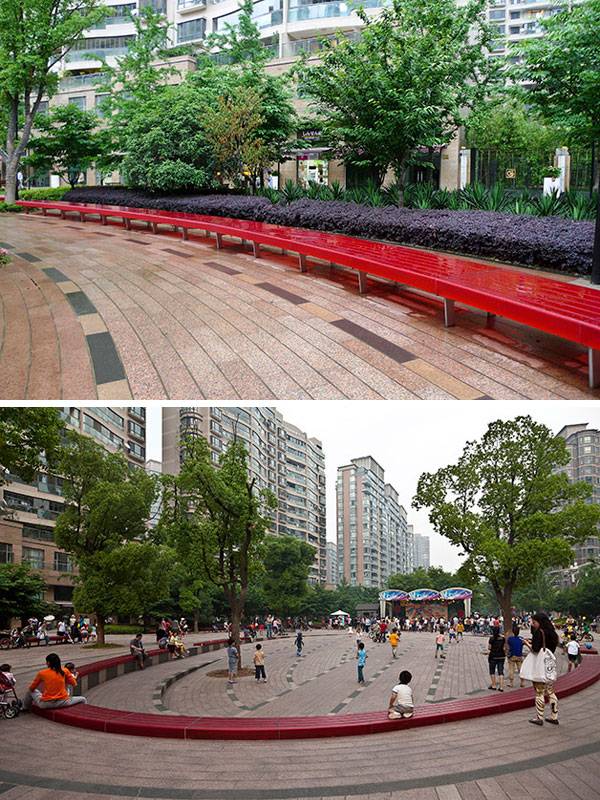
Gubei Gold Street. Top photo credit: Ying Yu Hung. Below: photo credit: Tom Fox
A Project Like No Other: A Source of Inspiration
The urban promenade definitely serves as a source of inspiration. It is amazing how the elements of landscape design blend perfectly, while each serving their purpose. The concrete thoroughfare practically becomes an urban park, while the vegetation lowers the ambient temperature by five to 10 degrees Fahrenheit. The tree canopy covers and cools 47 percent of the paving while filtering an amazing quantity of 72 tons of pollutants and particles. Last but not least, there are custom permeable pavers and architectural follies that come to complete the whole project.
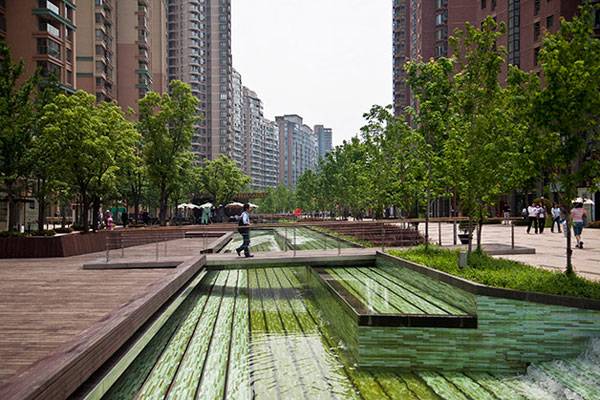
Gubei Gold Street. Photo credit: Tom Fox
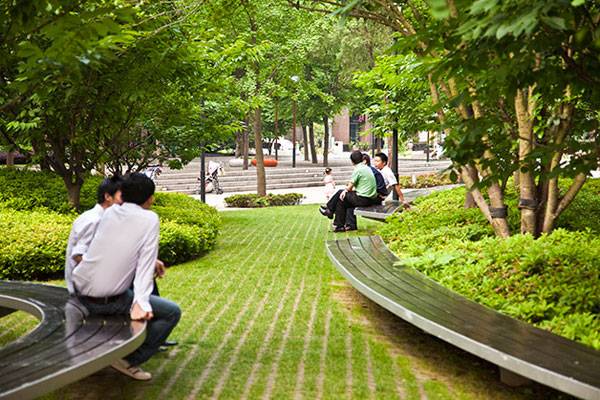
Gubei Gold Street. Photo credit: Tom Fox
Full Project Credits For Gubei Gold Street
Project Name: Gubei Gold Street Location: Shanghai, China Landscape Architect: SWA Team Members: Ying-Yu Hung, Gerdo Aquino, Hyun-Min Kim, Leah Broder, Kui-Chi Ma, Dawn Dyer, Yoonju Chang, Shuang Yu, Ryan Hsu, John Loomis, Jack Wu, Al Dewitt, Youngmin Kim Client: Shanghai Gubei Company Area: 4.6 hectares Dimensions of Promenade: 700 meters in length and averaging 60m in width Design: 2005-2008 Completion: 2009 Photo Credits: Gerdo Aquino, Tom Fox, Ying Yu Hung Recommended Reading:
- Urban Design by Alex Krieger
- The Urban Design Handbook: Techniques and Working Methods (Second Edition) by Urban Design Associates
Article by Alexandra Antipa Return to Homepage
Published in Blog


